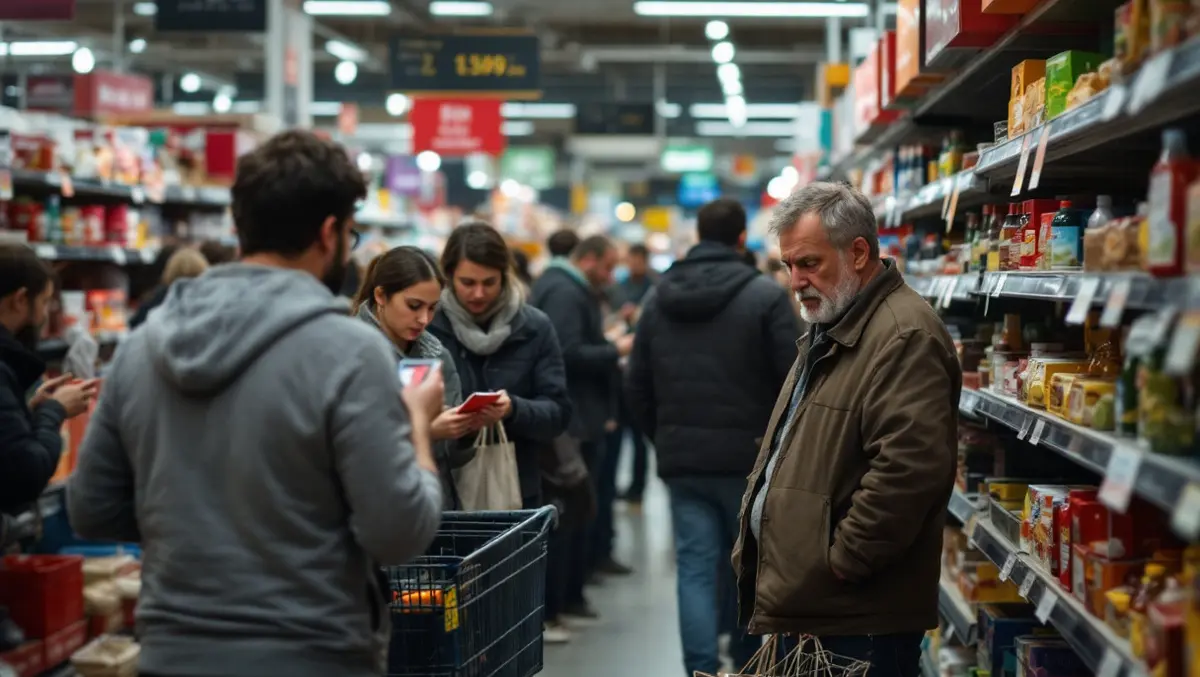
Cost of living & supply chain woes top retail concerns
Retailers have identified the cost of living crisis as their biggest challenge in 2025, according to research published by Fluent Commerce.
The latest findings from Fluent Commerce's second annual Retail Resilience study highlight the top concerns and pressures faced by the retail sector as it navigates persistent economic and operational headwinds. Conducted amongst more than 100 retail professionals, the survey reveals that 56% see the cost of living crisis as the most significant issue facing their businesses this year.
In the context of prevailing economic uncertainty, nearly a third of respondents said they were "concerned" for their business prospects in 2025, up from 15% expressing concern in 2024. The research also points to a fall in retail optimism: while 93% of retailers expected business growth last year, this figure has dropped to 81% for this year.
Distrust in government support emerged as a key theme, with 64% of surveyed retailers stating that the government has not put enough measures in place to help the sector. Furthermore, a quarter believe that current government policies are actively harming retail businesses.
Rob Shaw, GM EMEA at Fluent Commerce, commented on how changing consumer behaviour and cost pressures are shaping the industry's outlook. "Buying behaviours have evolved, with consumers now prioritising essential purchases over discretionary spending. This shift is prompting retailers to adapt their strategies to remain aligned with their customers' needs," explained Shaw.
He added, "At the same time, businesses are navigating increased operational costs, including recent rises in National Insurance contributions. While these changes present challenges, they also underscore the importance of innovation and agility in today's retail environment."
Persistent logistical difficulties continue to weigh on retailers. The report found that ongoing supply chain issues, including disruptions at the Panama Canal, have impacted four fifths of retailers, with 8% describing the impact as "severe." In addition, one fifth cited US trade tariffs as their principal current challenge.
Regarding the specific consequences of these supply chain problems, 30% reported incurring increased costs from rerouting orders, 28% indicated a large amount of stock was unavailable for online sale, and 27% pointed to having to raise prices as a result of more expensive shipping routes.
Supply chain resilience emerged as a key focus for adaptation. In response to recent complications, 26% of retailers are seeking to make their supply chain more robust, with over one fifth already implementing changes. Strategies include diversifying suppliers and sourcing from local vendors (each considered by 43%), rerouting goods through alternative, albeit costlier, paths (31%), while 9% are yet to assess alternative sourcing or fulfilment options but may do so if challenges persist.
Technological change is another major pressure point for retailers. The study found 36% struggle to keep up with new technologies such as artificial intelligence, and a third are specifically concerned about implementing such solutions. Additionally, 32% cited the delivery of seamless omnichannel experiences as problematic.
Inventory management remains a weak spot, with only 28% of retailers reporting real-time visibility across their supply chains—a significant drop from 45% last year. Poor inventory visibility is problematic for 68% of respondents, with 29% describing the issue as causing significant difficulties. Over a third noted that these shortcomings hamper their ability to deliver quality customer experiences.
Rob Shaw commented on the importance of addressing technology shortcomings: "Retailers are navigating a rapidly evolving technology landscape, and one of the most pressing challenges is gaining better visibility into their inventory. Without real-time data, it becomes increasingly difficult to deliver the kind of seamless, responsive customer experience that today's shoppers expect. The drop in inventory visibility from last year highlights just how crucial this area has become."
He continued, "Now more than ever, it's important for retailers to step back and assess how their inventory is managed and shared across systems. Having a clearer view of what stock is available—whether in store, in transit, or in back order—not only supports better customer communication but also helps avoid common pitfalls like overpromising or missing delivery expectations. This isn't just about technology for technology's sake. It's about enabling smarter decision-making, building resilience into operations, and ensuring retailers are better equipped to handle uncertainty."
Looking towards the future, the top strategic priority for retailers over the next five years is investment in new technology (62%), followed by product innovation (34%), sustainability initiatives (34%), and market expansion (29%).


